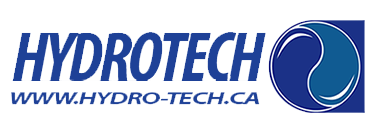3 Tips for Keeping Your Port Crane in Top Condition

Port cranes are key to keeping everything running smoothly at the port. What can happen if the crane breaks down? It’s going to cause several issues, not the least of which is a big hit to revenue. Customers are going to question the overall reliability of the port, which can have lasting, long-term effects. The best way to get around these problems is to keep your cranes properly maintained.
Maintaining your port crane can be a challenging task. Sure, they need standard care like lubrication, but what else is going to keep them running in top condition? Here are some tips to keep your port cranes operating in top condition:
Set Your Maintenance Routine to Your Equipment’s Needs
When setting up your maintenance plan, make sure it is adapted to the actual usage of the cranes. If your cranes get heavy usage, maintenance schedules should be set to keep the equipment operating in top condition. It’s possible they may need daily maintenance. Be sure to incorporate the regular maintenance schedule from the original equipment manufacturer (OEM). Following their guidelines will keep the crane running well, and they may have recommendations for more complex repairs.
Crane Component Maintenance
Cranes are comprised of several components. These components have their own maintenance cycles and routines:
- Base: The base of the crane holds the pedestal and connects the crane to the deck. Regularly check the mounting to ensure it is tight and secure.
- Pedestal: The pedestal distributes the weight and stress of the crane to the base. This allows the base to support the full weight without failing. The pedestal also holds the moving turrets that allow for the rotation of the crane. Maintaining the slew ring connector and ensuring proper lubrication here will keep the rotational aspects of the crane working in top shape.
- Moving Turret: The operator cabin is here, which requires a well-planned maintenance routine to keep it running properly. The crane jib is connected to the moving turret, allowing the loading, and unloading of products. With all the moving parts here, it’s vital to keep the crane from breaking down.
- Jib Arm: This is the part of the crane that literally carries the workload. The hydraulic equipment manages the movement of the jib. It’s imperative to check fluid levels often. Hydraulic fluid can become dirty over time, which can lead to clogged filters and ruptured lines. Dirty hydraulic fluid is one of the leading causes of equipment failure, so be sure to check it often.
- Hoist: The hoist is connected to the jib arm and works with the winch to operate.
- Hydraulics: The hydraulics need to be maintained at regular intervals. The oil pressure is what moves the crane, so even a tiny leak can bring the entire crane to a stop.
- Electrical System: The electrical system keeps the lights on, so it’s imperative that it is inspected often.
Crane Paint and Coating
The docks are inundated with salt water, wind, and harsh weather. These elements take a huge toll on equipment, making cranes and other components on the decks wear out quickly if not properly managed. Over time, the paint and coating on the equipment thins and starts to allow the elements to start corroding the underlying metal. When this happens, the stability and integrity of the crane can become compromised. This leads to needing major repairs.
To avoid this, regular cleaning and painting of the crane and surrounding concrete are necessary. A professional high-pressure cleaning, painting, and coating business can keep the crane working in top condition for years to come. Hydro Tech is able to clean, paint, coat, and seal your equipment to ensure that no corrosion will take hold.
Hydro Tech can clean the surface of your equipment to remove any signs of corrosion and deterioration. They use a high-pressure wash followed by repairing any cracks or pitting issues. A coat of primer paint is then applied to make sure there isn’t any chance of rust developing before the coatings can be applied.
After the coating process has been completed, a seal coat is applied to help keep everything secure and blocked from the elements. Our professionals here at Hydro Tech are able to get the job completed quickly and efficiently. We cover the Vancouver, BC., area and are available to assist with any industrial cleaning and painting needs you may have.
Categorised in: Cranes
This post was written by admin


